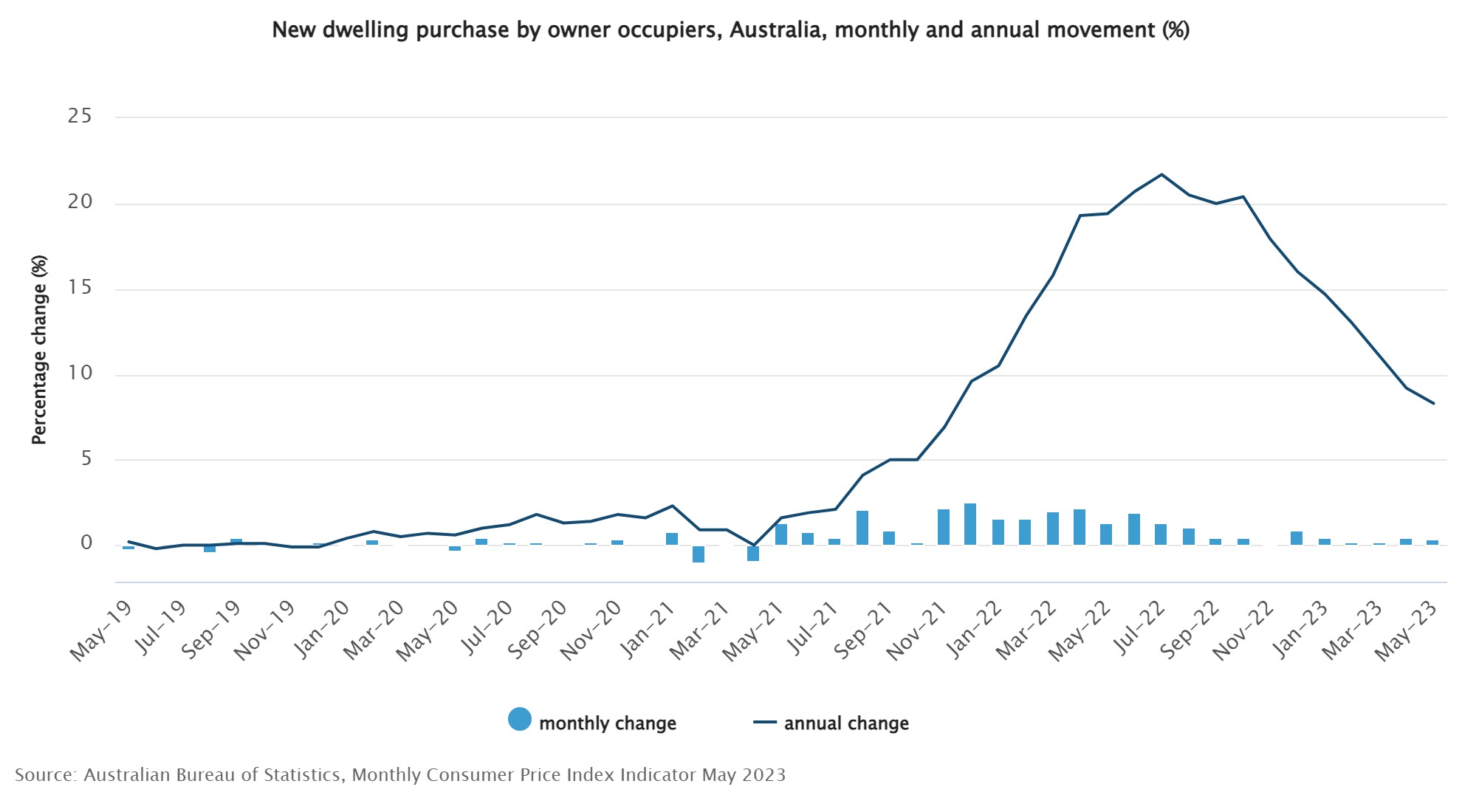

Australia’s monthly inflation rate has decreased, showing signs that inflation may have peaked.
But the question remains whether the latest figures will be enough to avoid the RBA raising the cash rate again at next Tuesday’s board meeting.
The monthly Consumer Price Index (CPI) indicator rose 5.6% in the 12 months to May 2023, according to the latest data from the Australian Bureau of Statistics (ABS).
This breaks the trend of annual inflation rising after it climbed from 6.3% in March to 6.8% in April.
Michelle Marquardt (pictured above), ABS head of prices statistics, said this month’s annual increase was the “smallest increase since April last year”.
“While prices have kept rising for most goods and services, many increases were smaller than we have seen in recent months," Marquardt said.
CPI inflation is often impacted by items with volatile price changes like automotive fuel, fruit and vegetables, and holiday travel.
"It can be helpful to exclude items with volatile price changes from the headline CPI indicator to provide a view of underlying inflation,” Marquardt said.
“When excluding these volatile items, the decline in inflation is more modest. The annual increase for the monthly CPI indicator was 6.4% in May, slightly lower than the rise of 6.5% recorded in April and down from a peak of 7.3% in December 2022."
The most significant contributors to the annual increase in the monthly CPI indicator in May were housing, up 8.4%, followed by food and non-alcoholic beverages (+7.9%) and furniture, household equipment and services (+6.0%).
This was partly offset by a fall in automotive fuel (-8.0%).
Housing’s annual increase of 8.4% was lower than the April increase of 8.9%. This continues the decline from its peak in July last year (21.7%), reflecting a softening in new demand and improvements in the supply of materials.
“Within the housing group, new dwelling prices rose 8.3%, which is the lowest annual growth since November 2021, as building material price increases continue to ease,” Marquardt said.
“Rent price increases went up again from an annual rise of 6.1% in April to 6.3% in May as the rental market remains tight.”

Food and non-alcoholic beverages prices rose 7.9% in the 12 months to May.
"The main contributor to this increase was meals out and takeaway food which increased from 7.3% in April to 7.7% in May, as higher costs of ingredients, rents, utilities, and wages were passed on," Marquardt said.
Price rises for food products not elsewhere classified (+11.5%), bread and cereal products (+12.8%), and dairy and related products (+15.1%) were also significant contributors to the increase.
The latest inflation data follows the RBA’s decision to lift the official cash rate by 4% in 13 months – the fastest rise in Australia’s history.
After raising the rate in June to 4.1%, RBA governor Phillip Lowe said inflation in Australia had passed its peak, but “at 7% was still too high”.
“It will be some time yet before it is back in the target range,” Lowe said. “This further increase in interest rates is to provide greater confidence that inflation will return to target within a reasonable timeframe.”
Subsequently, a number of lenders increased their home loan rates following the decision.
Before the data was released, all four big banks forecasted another rate rise of at least 25 basis points to 4.35%, with NAB predicting it increase to 4.6% by August.
